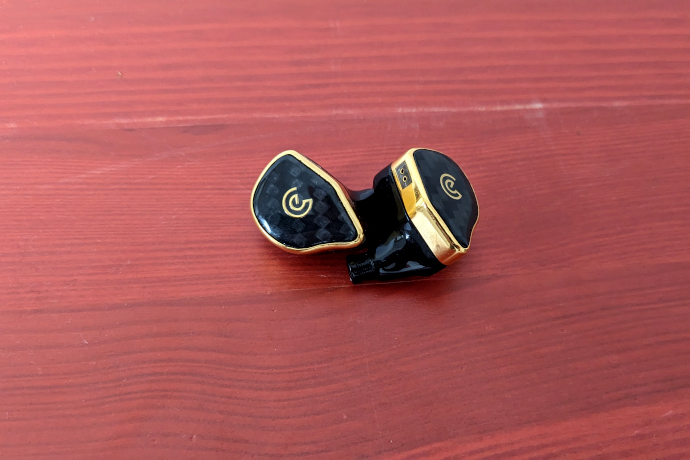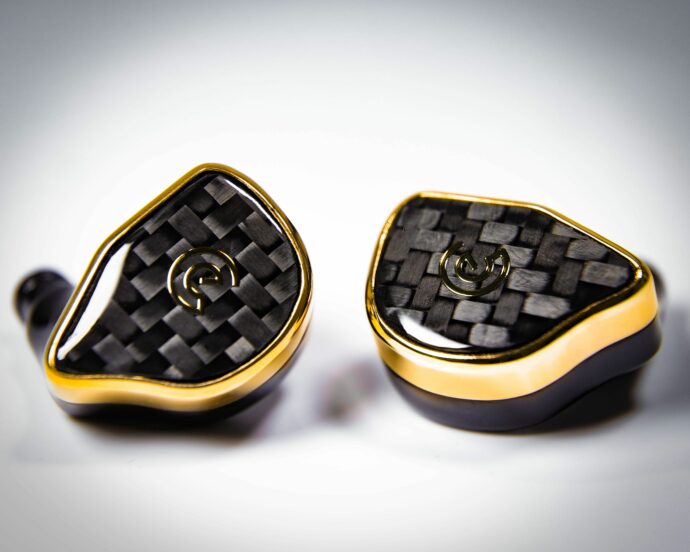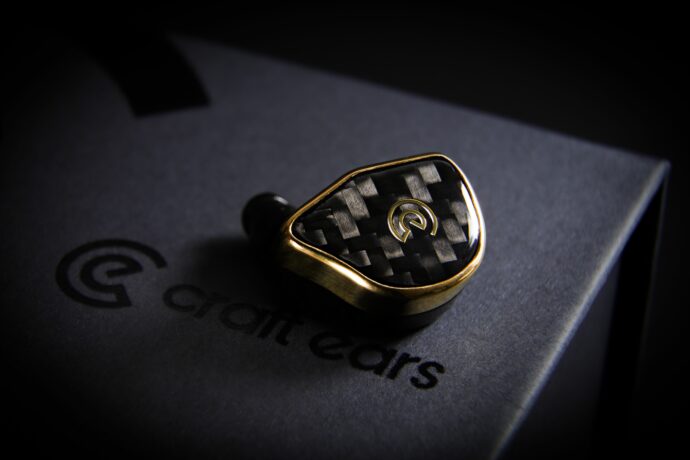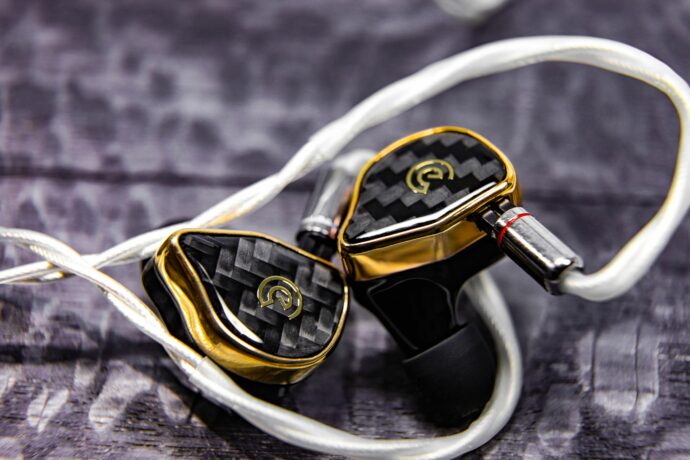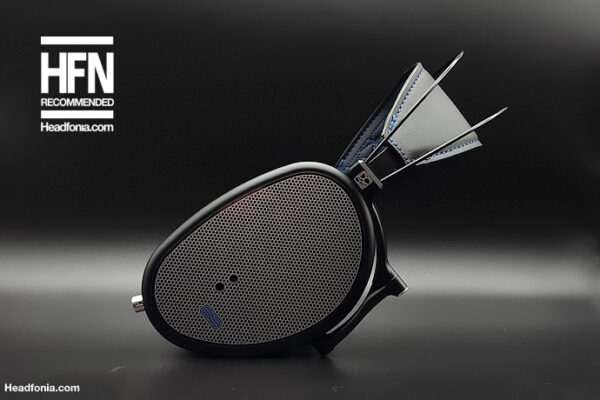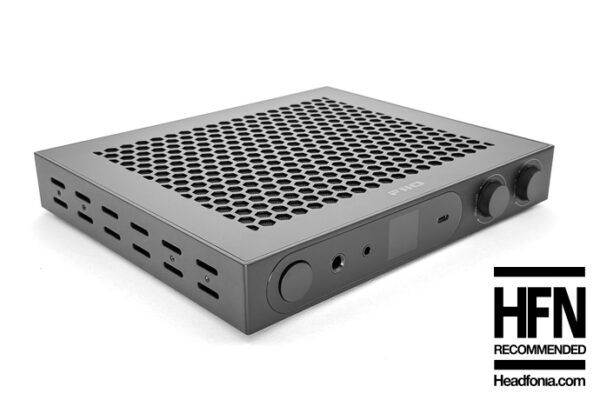Sound
Over the course of the last weeks I have used the Omnium as my daily driver on commute to work and at the office. I used it in stock configuration and paired it with my Lotoo PAW Gold Touch, PAW 6000, Astell&Kern SR35 and my Matrix Audio mini-i Pro 4.
The Omnium is a very well balanced sounding IEM that is technically quite potent, but lacks the bite, engagement and excitement people might look for. Its strongest value is in dynamic range and imaging, which is where the planar driver shows its full potential. The overall signature can be described as neutral with a tilt towards a darker sound.
Bass on the Omnium has good definition and comes in at a moderate level. The Omnium doesn’t shove loads of bass in your face, but rather places it in line with the midrange. Lows have good body, but could use more impact, control and drive for my taste. Sometimes I was feeling the need for more authority, especially when I was listening to bass intense Hip Hop or Electronic tracks. That was not the case when listening to Acoustic or Rock though. Here bass just came across as nicely natural and organic.
Craft Ears gave the Omnium’s bass nice texture and resolution, but made sure that it doesn’t sound too technical. It’s a sound that is more about realism than anything else. You won’t hear every little nuance of the Cello’s string or be blown away by thunderous sub-bass, but you will probably notice how constant the lows are sounding throughout the musical experience.
The star of the show to me is in the mids though. I love planar drivers in headphones for their ability to paint razor sharp images and offer high values of dynamic range. The Omnium thankfully adapted that feature very well. Mids sound full and warm, but they are not so thick, that it gets exhausting.
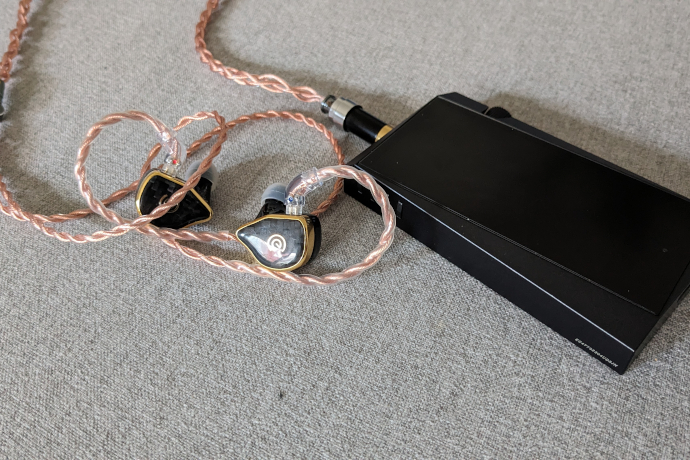
The Omnium has a beautifully dark background, where the musicians can shine out from with great contrast. This enables the Omnium to have very good imaging. Though the sound stage is not very wide, the instruments are carefully placed in this narrow room and can easily be taken apart from each other. Depth and layering are two traits that the Omnium is very good at.
Mids overall have a darker sound, where the focus lies on enjoyment rather than technically analysing it. Vocals come across as a little heavier on the bones, with good flesh, but with the darker tonality it sometimes is also missing air and emotional connection. There are tracks where I could relate to the singer’s emotional state, but with the Craft Ears it was a more difficult task.
Treble is calm and won’t be the problem of any conflicts. Treble heads definitely will be craving more, but anyone who has a lower tolerance to sharpness will find pleasing in the way the Omnium portrays highs.
The Omnium has good definition of the upper registers. Craft Ears’ Omnium has zero levels of sibilance or sharpness in the highs. Cymbals crash in a natural fashion, but without piercing your ears. The top end extension rolls off at an early state, and the upper treble is very relaxed for that matter.
In the last weeks I have put the Omnium through its paces and I have listened to a wide range of Genres. The Omnium is best suited for Acoustic and Jazz, which both sound wonderful on it in my opinion.
Comparisons
In this section we will take a quick look at how the Omnium compares to two other hybrid IEMs on the market right now. I only used the respective stock cables and ear-tips of each IEM for this comparison. My source of choice was the Lotoo PAW Gold Touch.
64 Audio Volür
The Volür is a ten driver hybrid IEM that uses a dual dynamic driver setup (in isobaric design) and eight Balanced Armatures. Both IEMs come at the same price and can be yours for €|$2,499
One key advantage the Volür has compared to the Omnium is its versatility. You can change the sound of the Volür by swapping out 64 Audio’s Apex modules.
When looking at the sound perspective, both models have a generally darker sound. But the Volür has a stronger bass, with more punch and authority, than the Omnium. The Volür has a more technical sounding low end, where you can pick out finer details in the bass. Volür also has a deeper extension into the sub-bass regions. The Omnium however, has a more rounded appearance in its lows. Giving the Craft Ears a bigger body, albeit not sounding as dense as the Volür’s.
The Volür has an airier mid-range, where instruments and vocals sound grander and bigger. The Omnium gives them more thickness and makes music sound more focused and compact.
Where the Omnium clearly beats the Volür is in imaging and background darkness. The Omnium’s planar driver does such a fantastic job here. Even if the sound stage of the Volür is stretched further into width, creating an overall bigger stage. The Omnium’s superior imaging makes it an easy trait to pick out each instrument. The Volür’s background is fuzzier and a bit more hectic.Still, when we look at resolution, details and texture, it is the 64 Audio monitor that wins. Depth and layering are two sections where Craft Ears has created the more potent IEM.
The treble of these two IEMs could not be more apart. The Volür’s highs are a lot more energetic and sharper, compared to the laid back and soft highs of the Omnium. The Volür extends further into the upper treble, providing the scene with a higher dose of air and brightness. Whereas the Omnium caters to a darker sound overall.
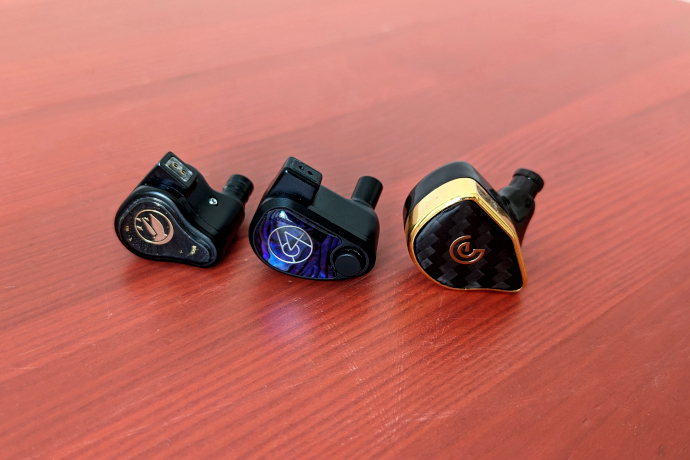
FiR Audio Rn6
The Radon 6 is a six-driver tri-brid IEM that uses a dynamic driver for lows, four open BA’s for mids and treble as well as an open EST driver for upper treble. Just like the Volür, you can also swap out modules and alter the signature of the Radon 6, which is a feature the Omnium doesn’t have.
A set of Radon 6 costs $3,299 USD, so considerably more than the €2,499 the Omnium goes for. In terms of sound, both have a wonderfully balanced signature, but the Radon 6 does sport a more open sounding mid-range and a more agile top-end. The Omnium has a darker coloring and a softer bass punch than the Radon.
Bass on the Radon is more powerful and impactful, especially the Kinetic bass driver (facing outside) where you can actually feel the vibrations is something special. The Omnium has a more classical low end signature, where bass sounds more fluid and organic. The FiR monitor goes for more speed, texture and control over all.
In the mids, the Omnium sounds more focused and thicker than the Radon. The FiR IEM on the other hand has more air in the midrange, making it a lighter presentation compared to the heavier Craft Ears. The Radon 6 also knows how to grab my attention more than the Omnium. It catches me with more energy and excitement, especially in the vocals.
In the treble, both monitors go for a different approach. Whereas the Omnium prefers to stay calm and polite, the Radon 6 is less apologetic and more energetic. The Radon has a wider extension and puts treble more forward, compared to the Omnium.
On a technical level, the Radon has higher resolution, a wider and grander sound-stage and gives me more details than the Omnium. The Omnium’s biggest strength again is imaging and background darkness. Here it slightly out-classes the Radon, that is only by a small margin though, as the Rn6 does a fantastic job here as well.
The Radon 6 has a more W-shaped signature, whereas the Omnium is more neutral, but with a clear dip in treble.
Conclusion
Craft Ears has many fans in our community, and I applaud their will to try things a little different. The implementation of the planar driver in the Omnium is as good as it gets and I think they have done it superbly.
As I have mentioned multiple times in the review, the biggest strength of the Omnium is in its background darkness and imaging. The contrast it gives to the musicians here is especially nice and I hope they keep on pushing this implementation further down their line-up.
On the Omnium’s product page you can find a graphic visualization of the sound. Many companies offer this kind of graphic, but I have never seen a more honest one than from Craft Ears.
If you’re in the hunt for a well rounded, neutrally yet darker tuned and technically potent IEM, and Acoustic is your main Genre, give the Omnium a try.
Summary
Pros:
– Well balanced sound
– Background darkness
– Dynamic Range
– Interchangeable plug design
Cons:
– Isolation
– Shells prone to scratching
– Not as musical as other offerings





